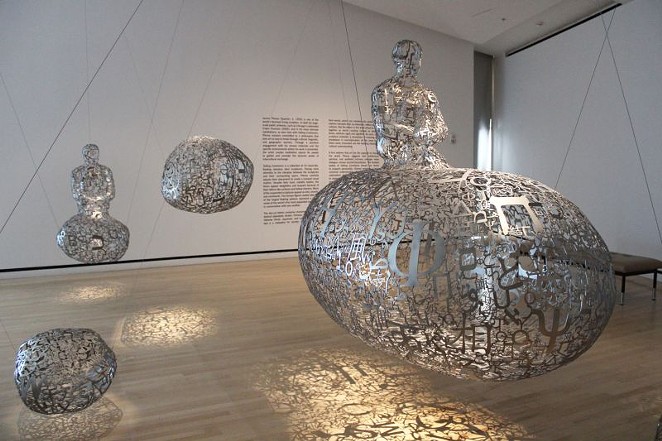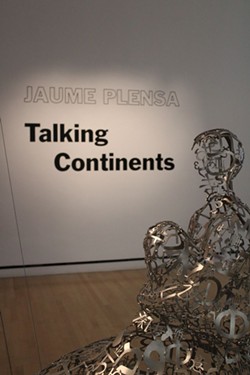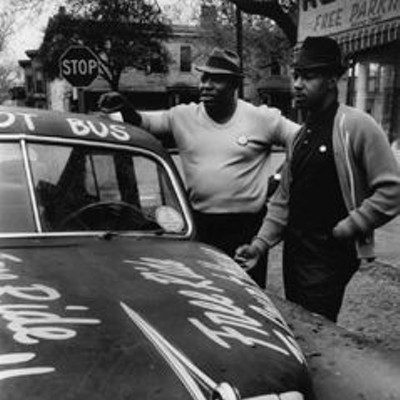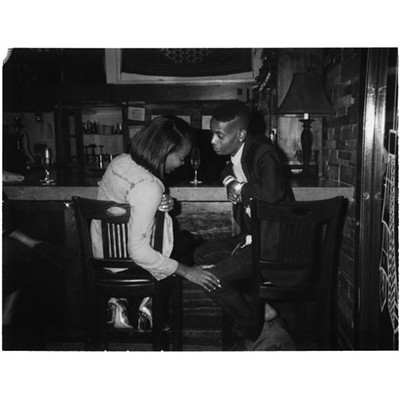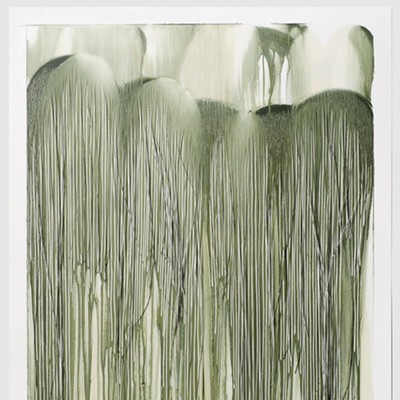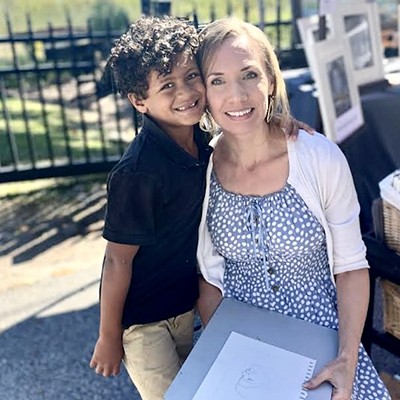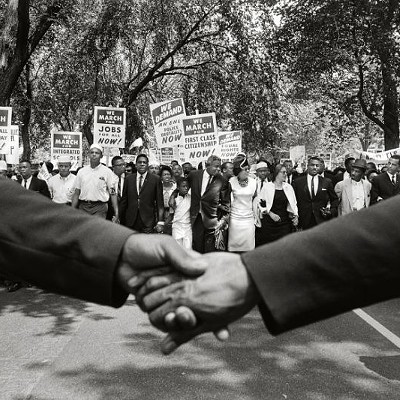Lately, our world has been increasingly divisive.
“There’s a lot of hateful conversations about nationalism, not only in the U.S. but globally, and the rise of nationalism globally,” says Rachel Reese, Curator of Modern and Contemporary Art at the Jepson Center.
Art is one of humanity’s greatest unifiers, and fortunately, the Jepson Center has just what we need.
“Talking Continents” by Barcelona-based Jaume Plensa opened at the Jepson on Mar. 1. The installation is purposely simple in its presentation.
“This is sort of a contemplative space where you can think of things that link us rather than divide us,” Reese says.
Reese notes that Plensa’s installation is typically set against dark painted walls, but the Jepson’s installation used light walls instead. The resulting effect is an ethereally beautiful space that invites reflection. Nineteen stainless steel figures, suspended by wires, are comprised of letters from eight different alphabets.
“He’s really interested in language,” explains Reese, “not just in the formal qualities of the individual characters from these alphabets, but he thinks of alphabet as sort of the perfect portrait of a culture. Alphabet or language is honed over millennia. The English language is still developing and changing as culture changes and our values.”
It’s not hard to see the metaphor in the work.
“Starting from the micro, there are individual different alphabets coming together to form these individual elements to form the overall installation experience,” says Reese, “but he’s also interested in using these to represent humanity and individuals and how it relates to collective culture, collective groups of people, how we interrelate with each other.”
Another inspiration for Plensa’s vision of community was music.
“He talks about how his father was a pianist, and growing up and listening to music shaped the way he felt about the world and beauty through music,” Reese shares. “In a lot of his earlier work, he was using musical notes in very similar organic floating shapes. I think the idea of continents is something he’s been interested in for a long time—globalism without judgment.”
In “Talking Continents,” there are five floating shapes that are larger than the other ones and have a figure riding them.
“For him, that represents the five most populated continents of the globe,” says Reese. “They have these faceless figures that are just enough human representation to abstractly understand we’re talking about people and the body, but they’re not specific enough that there are any markers of identity.”
The exhibition continues with Plensa’s other works. In the back room of the gallery is “Laura II,” an extremely large alabaster head weighing over two thousand pounds.
“Around the time [of ‘Talking Continents’], he also became really interested in working with models of heads and the human form, but though the flattening of the human form,” Reese says. “It’s a shift in perspective or skewing the scale.”
Plensa uses data points to map the faces of women and girls and then digitally manipulates the scale before machine carving the figure and hand-finishing it.
The Telfair also included some graphite [renderings] in the exhibition, and the unifier of these pieces is that each figure’s eyes are closed.
“He talks about dreaming, which, for him, dreaming is looking inside yourself as a way to be reflexive,” says Reese. “It’s not a way to look out at the world, but a way to close the world off and think about your inner thought, inner psychology, inner identity, and to reflect on that.”
The back room where “Aurora II” is housed is perfect for that inner dreaming Plensa hopes to inspire. The lights are dim with one spotlight shining precisely on the figure’s face, creating a sleepy, dreamy feeling.
“They’re kind of captivating, but also you feel like you’re being a voyeur. Are we supposed to be looking at them?” asks Reese. “It’s an interesting relationship between the viewer and the object. For me, it creates this sort of religious totem experience.”

